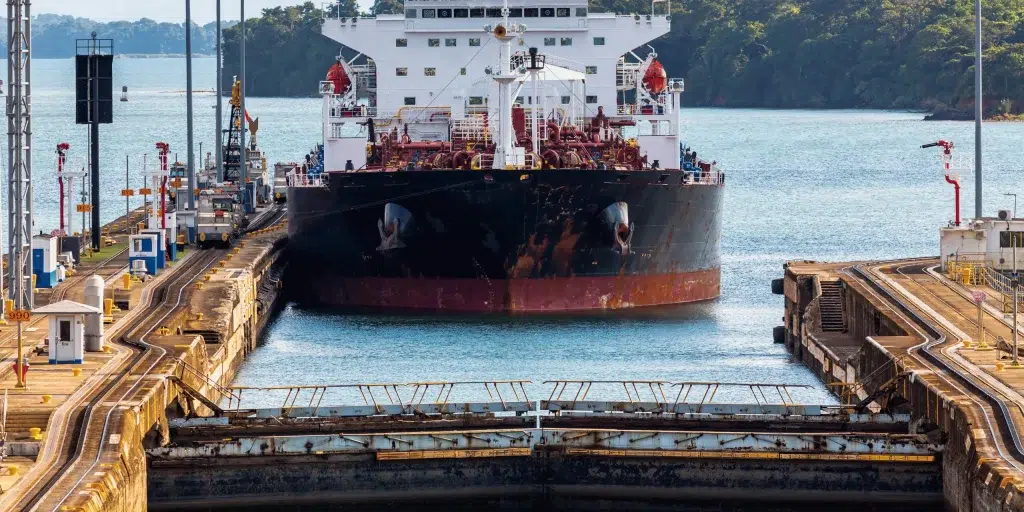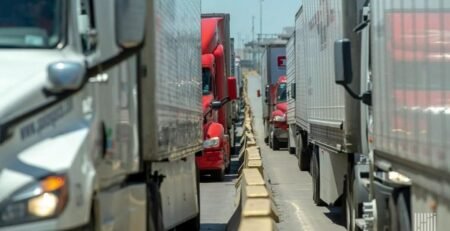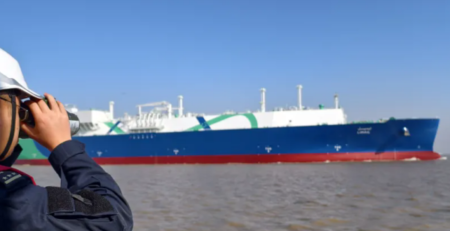Rerouting Reality: Drought Turns Panama Canal Into a Strategic Risk

Panama City – June 30, 2025
At 6:40 a.m., with the heat already pressing against the steel decks, a bulk carrier idled outside the canal locks, waiting for clearance that might not come today. Or tomorrow.
In Panama, rainfall has been scarce for months. So scarce, in fact, that water levels at Gatun Lake—the canal’s main reservoir—have dropped to the point where large vessels must now compete for access. Not everyone gets through. Fewer slots. Heavier scrutiny. Longer delays.
“We’re not just facing a traffic jam,” said Elisa Romero, who oversees trans-Pacific routes for a Spanish-based freight operator. “We’re seeing the limits of a system that wasn’t designed for climate extremes.”
Shipping Plans Upended
This is not the first time drought has disrupted the Panama Canal. But this time feels different. The canal authority has cut daily transits significantly—forcing shippers to reevaluate routes that once seemed non-negotiable.
Auction prices for time slots have soared. Some carriers are bidding over half a million dollars just to avoid a week-long delay. Others are giving up and rerouting entirely—either around South America or through inland rail systems, though neither option is cheap or quick.
“We’ve added nine days to delivery windows for East Coast U.S. cargo,” said Kazuki Watanabe, who manages operations for a Japanese textile firm. “Clients aren’t happy, but they understand: this isn’t a business decision. It’s nature.”
A Fragile Link in a Fragile Chain
Perishable goods—bananas, avocados, chilled seafood—have been among the hardest hit. Colombian and Ecuadorian exporters are struggling to maintain quality across extended voyages. And storage facilities in nearby ports are already nearing capacity.
In the U.S., downstream effects are just beginning to show: retailers are adjusting stock strategies, and trucking firms are anticipating compressed timelines once goods do arrive.
What Now?
There is no fast fix. Infrastructure projects are underway, but they won’t raise water levels. And with predictions of hotter, drier seasons ahead, the reliability of the canal as a primary artery is now in question.
Some industry observers are calling for a more diversified routing mindset—less dependence on chokepoints, more agile intermodal planning. That shift won’t happen overnight. But it may start with this dry season.
The post Rerouting Reality: Drought Turns Panama Canal Into a Strategic Risk appeared first on The Logistic News.
Share this post
Related
Posts
MEXICO – Truckers’ roadblocks disrupt North American flows
Since dawn, several Mexican highways have looked more like improvised parking lots than logistical corridors. Groups of drivers block entire...
China Cargo Airlines launches new Paris–Shanghai freight service
China Cargo Airlines inaugurates a direct Paris–Shanghai freight flight, complemented by feeder road connections across Western Europe. This corridor meets...
Hudong-Zhonghua de Chine établit un nouveau record pour les livraisons de méthaniers
Chinese shipbuilder Hudong-Zhonghua Shipbuilding today delivered its ninth LNG carrier of the year, marking a new record for a single...
Onboard cameras: technology alone is insufficient in the absence of a true policy
The problem of cameras mounted on trucks was discussed at the Trimble Insight 2025 trade exhibition mainly from the aspect...




